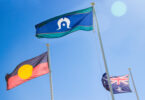ASIO Director-General of Security Mike Burgess stated in the annual threat assessment briefing that while the threat of Islamic extremist attacks is still the agency’s biggest concern, the threat posed by extreme right-wing groups is on the rise.
“In Australia, the extreme right-wing threat is real and it is growing. In suburbs around Australia, small cells regularly meet to salute Nazi flags, inspect weapons, train in combat and share their hateful ideology.”
However, Australian far-right extremists are not new, as groups with Nazi influences dating back to the 1930s, have a strikingly similar ideology to modern-day extremist groups.
While their views and values may have remained consistent over decades, one aspect of these groups that has improved dramatically with time: public relations.
Modern extreme right groups have become increasingly aware that some ideas are less palatable for their targeted mainstream audience than others, with stances on anti-Islamic immigration pushed while anti-semitism and traditional neo-Nazi ideals are swept under the carpet.
John Safran is an author and documentarian who spent a year covering extremist groups in Australia for his book ‘Depends What You Mean by Extremist’.
During this time, Safran encountered high profile members of Australia’s extreme right community, including Blair Cottrell, former leader of the United Patriots Front.
In his book, Safran wrote: “For Blair (Cottrell), anti-Islam rhetoric draws a crowd, so he can then ‘plant the seed of something a little bit more controversial’.”
“I saw a lot of that, the groups glide from issue to issue, first anti-Muslim, then anti-African and finally people who’d lost their jobs, trying to make their message a little more mainstream.”
Cottrell gained infamy in 2016 after being the subject of a number of articles and an appearance alongside a hostile panel on ABC2’s current affairs program Hack Live.
Despite the significant airtime Cottrell received on HackLive, the largest controversy surrounding him and the media came in 2018 when former Chief Minister of the Northern Territory, Adam Giles, hosted Cottrell on his Sunday night show for Sky News Australia.
It was wrong to have Blair Cottrell on Sky News Australia. His views do not reflect ours. The interview has been removed from repeat timeslots and online platforms.
– Greg Byrnes, News Director— Sky News Australia (@SkyNewsAust) August 5, 2018
The interview led to former Labor MP and Sky News commentator Craig Emerson leaving Sky, as he described Giles’ interview as ‘soft as putty’ and criticised the interview as “another step in the journey to normalising racism and bigotry in our country”.
I have advised @SkyNewsAust that I have quit as a Sky commentator. My father fought Nazis in WWII and was interred in a German POW camp. The decision to allow Neo-Nazi Blair Cotterell onto the channel was another step in a journey to normalising racism & bigotry in our country.
— Craig Emerson (@DrCraigEmerson) August 6, 2018
The difference between Cottrell’s appearance on the ABC and Sky and the controversy that followed boils down to ethics.
Journalists have an ethical duty to hold people to account for their actions and words.
Political commentators argued that Giles’ ‘soft’ interview gave Cottrell a free ride on a national platform to spread his extremist ideology unopposed, while Hack Live’s Tom Tilley and other panellists challenged Cottrell and held him to account.
Jason Wilson from The Guardian wrote, “clicks are clicks, even if they’re from hate-readers. In an attention economy, those who are adept at flirting with extremism without quite crossing the line into actionable hate speech are valuable commodities.”
Wilson highlighted the critical point that controversial figures generate outrage, which directly translates to online engagement and following advertising revenue.
While some argue that those who hold abhorrent views, like Cottrell, should never be given a platform to promote hate – challenged or otherwise – Safran believes that it’s important for writers and filmmakers to be able to tell stories.
“Everyone has an angle, you just need to make sure that you’re telling your story and not theirs.”
“I don’t like the idea that you can’t tell stories because you’re giving people a platform, that’s not giving writers a lot of credit, and you have to push back against that.”
“Louis Theroux went through the entirety of the 90s pretty much exclusively interviewing extremists and I don’t think that anybody could rationally accuse Louis of spreading Nazism without sounding like a lunatic.”







